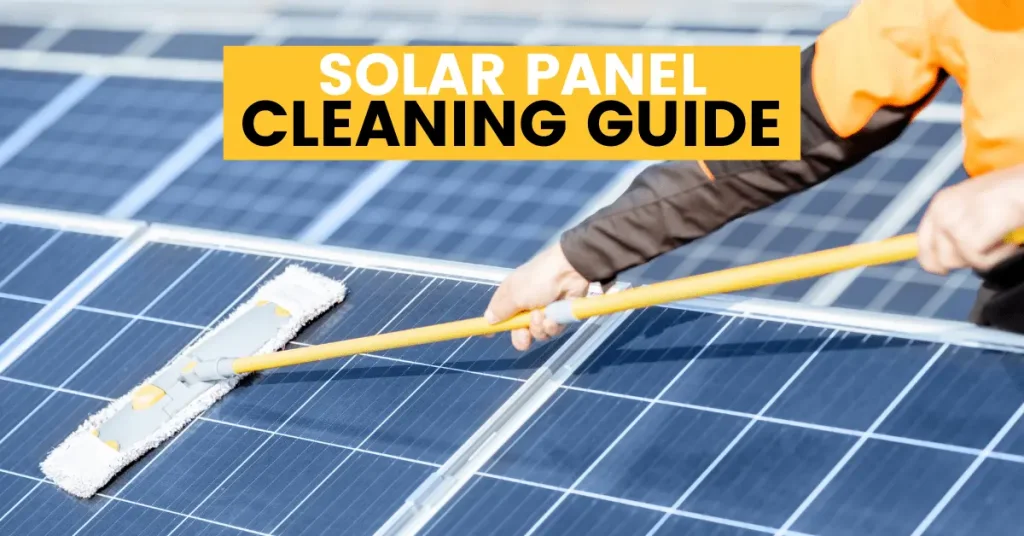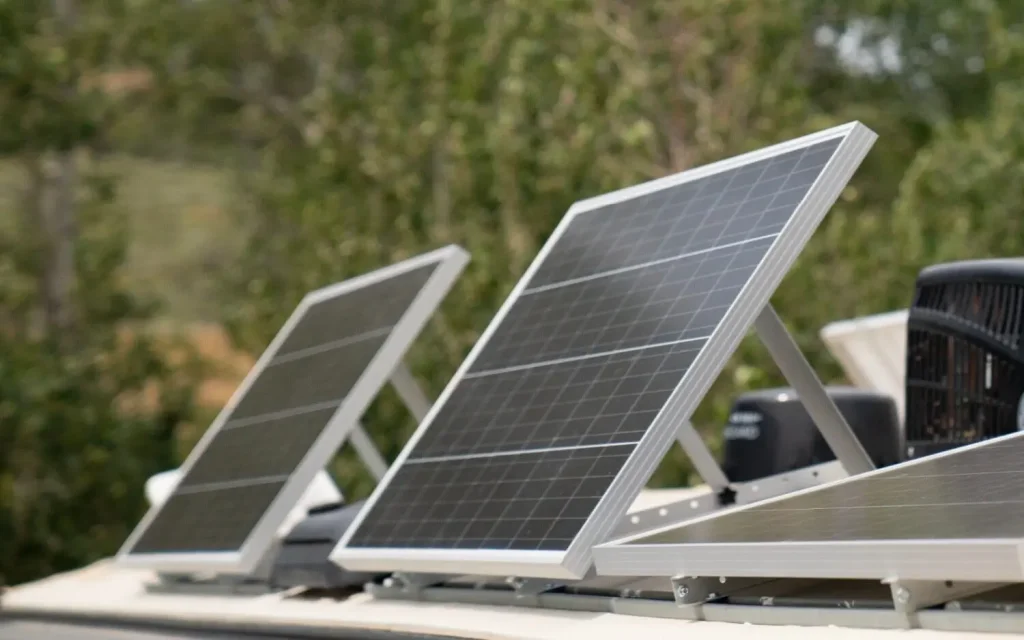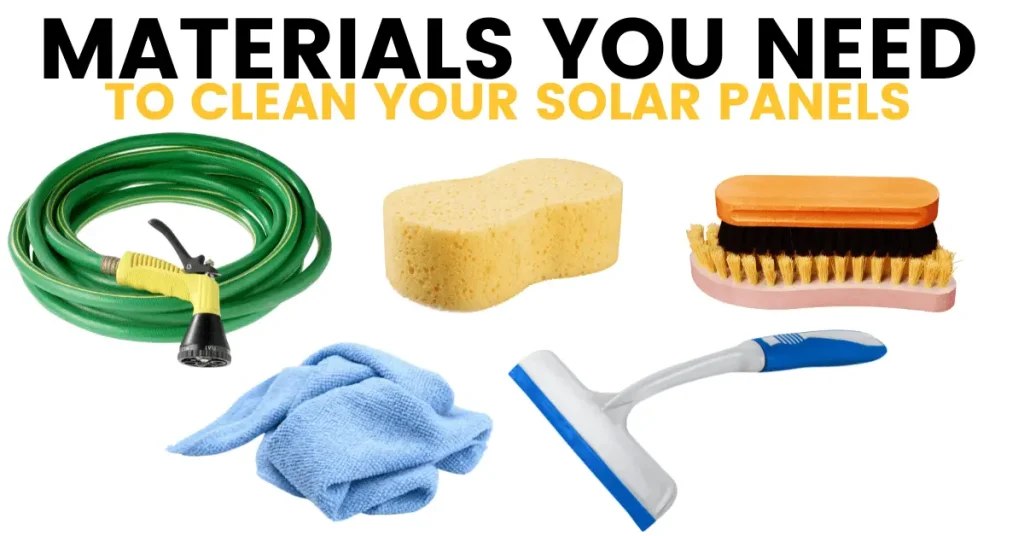Solar panels are an amazing way to produce clean, renewable energy from the sun. As they convert sunlight into electricity, they can help you save money on your energy bills and reduce your carbon footprint. However, over time, solar panels can become dirty, which can decrease their efficiency and output. Regular cleaning of your solar panels can ensure they work efficiently and maximize your energy production.
In this article, we will provide you with a comprehensive solar panel cleaning guide. We’ll cover everything from why it’s important to clean your solar panels to how to clean them effectively and safely.

Dirt, dust, leaves, bird droppings, and other debris can accumulate on the surface of your solar panels, reducing the amount of sunlight that reaches the cells. This can lower the amount of electricity your panels produce and, therefore, decrease your savings on your energy bill. Additionally, dirty panels can shorten the lifespan of your solar system, which can cost you more money in the long run. Occasional cleaning is necessary to ensure maximum efficiency and prolong the lifespan of solar panels.
How often you need to clean your solar panels depends on several factors, including where you live, the angle of your panels, and the weather. If you live in a dusty area, or if your panels are on a flat roof where leaves and debris can accumulate, you may need to clean them more frequently. Experts recommend cleaning solar panels at least once a year. However, if you notice a significant decrease in output or if your panels are particularly dirty, you may need to clean them more often.
Solar panels typically demand minimal upkeep and cleaning in regions where rainfall is frequent. This is because rainwater can effectively wash away most of the dust and dirt that could obstruct the panels’ ability to harness sunlight. However, even in areas with adequate rainfall, grime can accumulate over time. For instance, dry climates and areas near industrial or construction sites are more susceptible to panel grime, and it may not be sufficient to rely solely on rainwater to keep the panels clean.

Cleaning your solar panels is a simple task that can be done by anyone. Before jumping into cleaning your solar panels, remember that safety first! Safety should be the top priority when it comes to cleaning solar panels. While standard hardware supplies can be used for the job, it’s essential to take proper precautions. If you plan to work on a roof instead of from the ground, it’s recommended that you wear a hard hat, use ladder support, and wear a harness. These safety measures can help prevent accidents and ensure that you complete the task safely. Remember, it’s better to be safe than sorry, so don’t take any shortcuts when it comes to safety.
Here are the steps to follow to ensure proper cleaning and ultimately optimized solar panel efficiency:
Before cleaning your solar panels, it’s important to check your warranty to make sure that you’re not voiding it by cleaning them yourself. Some manufacturers require that a professional clean your panels to ensure that they’re not damaged during the cleaning process. If you’re unsure, contact your solar panel installer or manufacturer to ask about their specific cleaning guidelines.
Before starting the cleaning process, it is important to make sure your solar panels are in good condition, especially when dealing with wiring around the panels. Damaged wiring on solar panels can pose a serious risk of electrical shock or fire, and may also compromise the effectiveness of the solar panels. Therefore, it is crucial to regularly inspect and maintain the wiring and connections on your solar panels to ensure their safety and optimal performance.
To clean your solar panels properly, you won’t need to spend a lot of money on fancy equipment. In fact, you might already have all the necessary items lying around your home.

Before you begin cleaning your solar panels, it is important to take some preliminary steps to ensure that the process goes smoothly and without any mishaps. Start by removing any large debris or dirt on the panels by gently brushing them off with a soft-bristled broom or brush. Do not use any abrasive materials or harsh chemicals, as these can scratch or damage the surface of the panels.
Once you have removed the larger debris, it’s time to rinse the panels with a gentle stream of water. A garden hose with a spray nozzle or a bucket of water can be used for this purpose. However, avoid using a high-pressure hose or pressure washer, as the force of the water can be strong enough to damage your solar panels. The gentle stream of water should be enough to wash away any remaining debris, dust, or dirt.
After rinsing off the panels to remove any loose debris or dirt, it is important to give them a thorough scrubbing to ensure optimal performance. Use a soft-bristle brush or sponge to gently remove any remaining dirt or grime from the surface of the panels. You can use a mild soap or a specialized solar panel cleaning solution, but be sure to avoid harsh chemicals or abrasive materials, as they can damage the panels. When choosing a cleaning solution, look for a product that is specifically designed for use on solar panels and does not contain any ammonia, vinegar or other harsh chemicals. It is important to note that even cleaning solutions that are considered “safe” for use on solar panels can still have abrasive properties. This is why it is important to carefully read the labels of any cleaning solutions before using them on your panels. Even gentle abrasives can cause damage to the surface of the panels over time, which can result in a decrease in their overall efficiency.
One thing to keep in mind while cleaning solar panels is the presence of bird droppings. Although they may seem harmless, bird droppings can actually be quite corrosive and can damage the surface of the panels. So, it is crucial to remove them as soon as possible. You can use a soft cloth or sponge to gently clean off the droppings, but be careful not to scratch the surface of the panels. If the bird droppings are particularly stubborn, you may need to soak the affected area with water for a few minutes before attempting to clean it.
After you have finished scrubbing your solar panels with a soft-bristle brush or sponge and soap or a specialized solar panel cleaning solution, it is important to rinse them thoroughly. This will help to remove any remaining dirt, grime, or cleaning solution residue that may have accumulated on the panels during the scrubbing process. Any soap or cleaning solution left on the panels can cause streaking or leave a film that can reduce the panels’ efficiency. To rinse the panels, use a hose or bucket of water and gently rinse the panels from the top down.
After rinsing the solar panels, it’s important to dry them properly to avoid water spots or streaks. The best way to dry the panels is to use a squeegee or a microfiber cloth. A squeegee is a handheld tool with a rubber blade that you can use to remove water from the panels. Simply start at the top of the panel and move the squeegee down to the bottom in a straight line. Make sure to overlap each stroke slightly to avoid missing any spots.
If you don’t have a squeegee, a microfiber cloth can be used as an alternative. Microfiber cloths are soft, non-abrasive and absorbent, making them ideal for cleaning solar panels. Gently wipe the panels with the cloth to remove any remaining water droplets. Be sure to use a clean and dry cloth to avoid any smudging or streaking.
Avoid using paper towels or abrasive materials such as brushes or scouring pads, as they can scratch the surface of the panels and damage the anti-reflective coating. Scratches on the surface of the panels can reduce their efficiency by reflecting sunlight instead of absorbing it. So, it’s important to use gentle and non-abrasive materials when drying your solar panels to maintain their performance and prolong their lifespan.
After you’ve completed the cleaning process, it’s important to ensure that your solar panels are functioning properly. First, monitor its output to make sure that it is working as it should. You can do this by checking your solar system’s monitoring app or the inverter display to see the amount of energy being produced.
It’s important to note that after cleaning your solar panels, you may see an immediate increase in energy production, as dirt and debris can block sunlight and reduce efficiency. However, the long-term benefits of regular cleaning include maximizing energy production and extending the lifespan of your solar panels.
If you notice that your solar system is not producing as much energy as it should be, even after cleaning, there may be a problem with your system that requires professional attention. Common issues that can affect solar system performance include faulty wiring, malfunctioning inverters, and damage to the solar panels themselves.
Regularly monitoring your solar system’s output and addressing any issues promptly can help ensure that your solar panels continue to produce clean, renewable energy for years to come.

In conclusion, regular cleaning of your solar panels is crucial to ensure that they’re working efficiently and producing the maximum amount of energy possible. By following these simple steps, you can easily clean your solar panels and maintain their performance, ultimately helping you save money on energy bills and reduce your carbon footprint.
If you’re interested in making the switch to solar energy or adding to your current system, Point Zero Energy has a variety of solar power options available to fit your needs. From portable solar generators like the Titan Power Station to solar panel systems for homes, RVs and businesses, we offer a range of products that can help you become more energy independent and reduce your reliance on the grid. And with regular maintenance and cleaning, your solar panels can continue to produce clean, renewable energy for years to come. Take the first step towards a more sustainable future and explore Point Zero Energy’s solar power options today!
